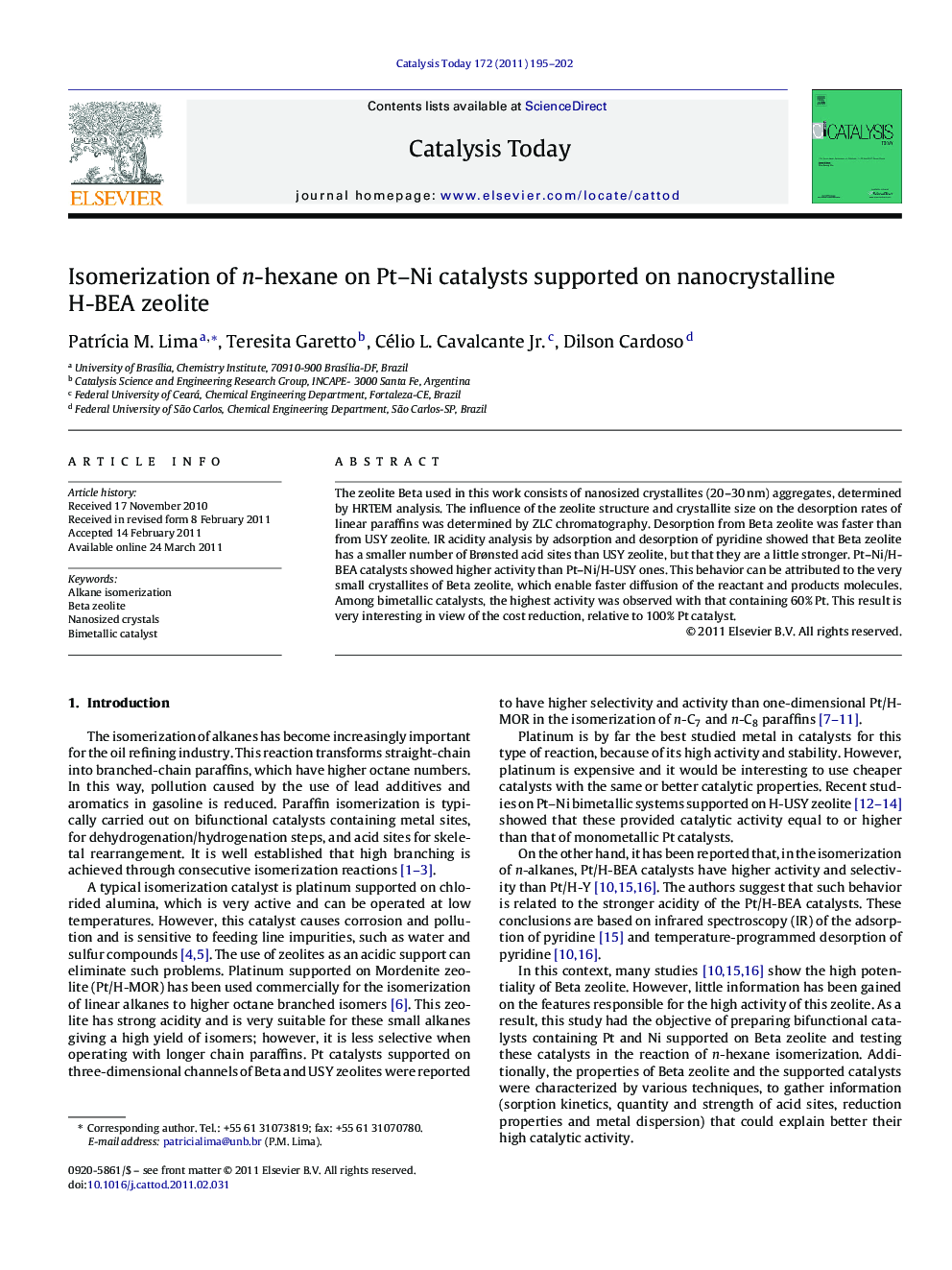| Article ID | Journal | Published Year | Pages | File Type |
|---|---|---|---|---|
| 55706 | Catalysis Today | 2011 | 8 Pages |
The zeolite Beta used in this work consists of nanosized crystallites (20–30 nm) aggregates, determined by HRTEM analysis. The influence of the zeolite structure and crystallite size on the desorption rates of linear paraffins was determined by ZLC chromatography. Desorption from Beta zeolite was faster than from USY zeolite. IR acidity analysis by adsorption and desorption of pyridine showed that Beta zeolite has a smaller number of Brønsted acid sites than USY zeolite, but that they are a little stronger. Pt–Ni/H-BEA catalysts showed higher activity than Pt–Ni/H-USY ones. This behavior can be attributed to the very small crystallites of Beta zeolite, which enable faster diffusion of the reactant and products molecules. Among bimetallic catalysts, the highest activity was observed with that containing 60% Pt. This result is very interesting in view of the cost reduction, relative to 100% Pt catalyst.
Graphical abstractThis study is focused on the isomerization of n-hexane over bimetallic catalysts supported on H-BEA zeolite. Due to its very small crystallites, these catalysts showed higher activity than Pt–Ni/H-USY ones.Figure optionsDownload full-size imageDownload high-quality image (131 K)Download as PowerPoint slideHighlights► The Beta zeolite used in this work is composed of nanosized crystallites. The Pt–Ni/H-BEA catalysts showed higher activity than Pt–Ni/H-USY ones. The activity of Pt–Ni/H-BEA catalyst increased up to 60 mol% Pt.
